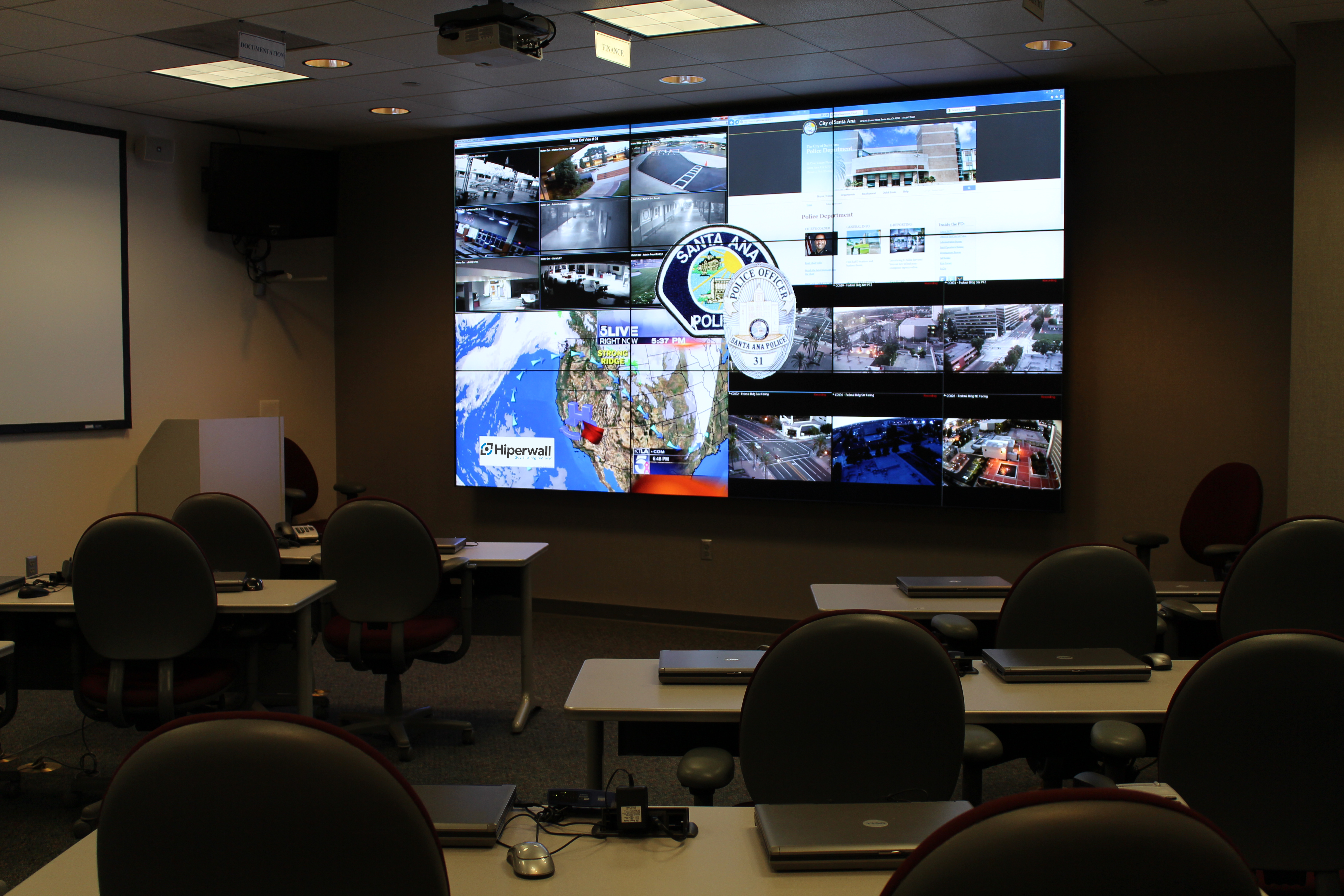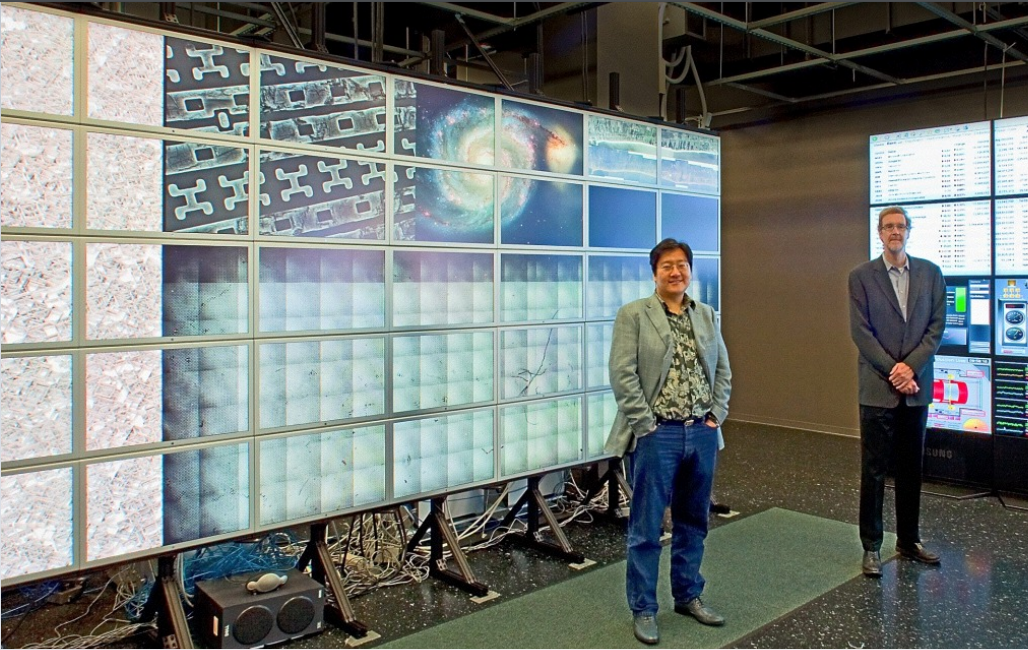The SAPD Emergency Operations Center morphed from two main workstations in separate offices displaying surveillance system cameras on four large screens primarily designed to monitor the perimeter of the Police Administration Building to a Hiperwall-driven command center with nine 55-inch NEC, thin bezel, commercial-grade displays. The SAPD did not have a “true” video wall or visualization system in place prior to installing a Hiperwall-driven system which includes IP cameras, an enterprise-class network management system and a new fiber-optic backbone.
Knowing they needed a level of preparedness for potential disasters, the SAPD began reviewing LED video wall solutions for a command center. The SAPD ultimately chose Hiperwall because it was designed specifically for large display surfaces – it was a true visualization system. But more importantly, it gave the SAPD the centralized capability for displaying infinite data sources that could be viewed and managed effectively and easily. The Hiperwall visualization solution allows the Emergency Operations Center to receive any number of feeds from the 300-plus city-wide cameras, display the SAPD CAD system, National Weather Service satellite imagery, several social media channels, helicopter downlink video, SAPD video cameras, local news and much more.
In addition, their visualization system includes video content analytics to detect policy driven situations such as motion in restricted areas, loitering, overcrowding in public places, and more. Hiperwall seamlessly integrates access control and physical security systems allowing alarms and programmed events to be jointly managed.
During the winter storm, the SAPD Emergency Operations Center powered by Hiperwall became the command and control room video wall for the city’s agencies to monitor the city-wide cameras, satellite weather changes in real-time, city maps from Google Earth to view flood damage, traffic accidents, 911 calls, fire/EMS, and public works. All three city departments were in the Emergency Operations Center using the Hiperwall visualization system to collaborate which allowed them to be more efficient in resource management, triage calls and managing response times during the storm.
After discovering Hiperwall with all its capabilities, the SAPD stopped evaluating other video wall systems. Not only was Hiperwall an advanced visualization solution, it provided the SAPD the latest in technology and best practices for their Emergency Operations Center. It gave them a cost-effective solution that will grow with them. The Hiperwall software-centric solution requires only ordinary PCs, monitors, and a standard Ethernet network making Hiperwall a more affordable visualization system than traditional video wall technology. It’s ease of operation also expedited the training process, which effectively reduced manpower and operational costs.
Having a single location to gather and share information with those in the field and make risk mitigating decisions keeps the Santa Ana community safe. The incident will always dictate the necessary feeds and data requirements, but the SAPD is now prepared with their Hiperwall-driven Emergency Operations Center to manage or co-manage any situation.





